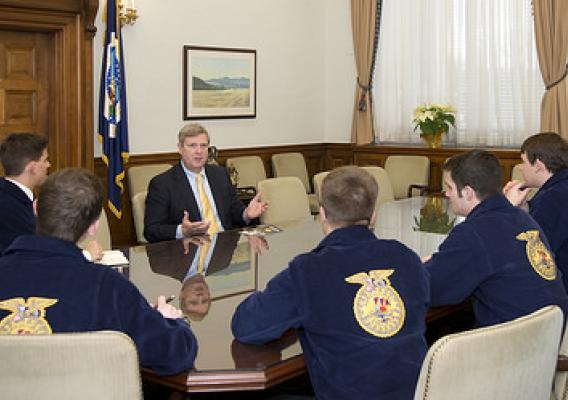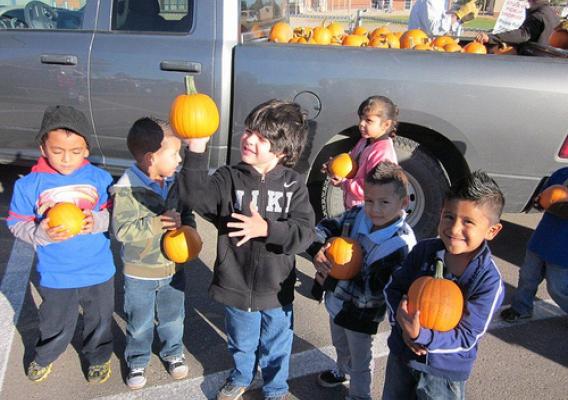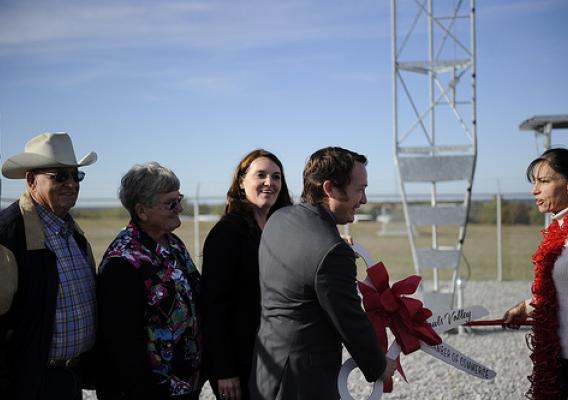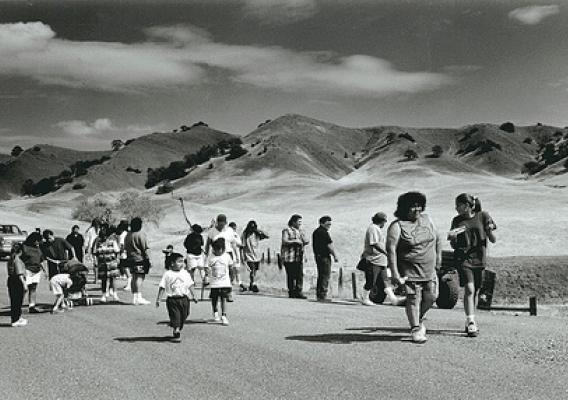“We are excited by the challenges you presented to us,” said FFA National Secretary Mitch Bayer at the conclusion of a half-hour meeting of National FFA officers with Agriculture Secretary Tom Vilsack at the USDA Whitten Building earlier this week.
In his meeting with the officers, the Secretary covered a wide range of issues, including the immediate need for a new Food, Farm and Jobs Bill. When it passes, he said, the National FFA should study provisions that will help young, beginning farmers become established. He said there will be, he hopes, an easier path to credit and also support for the USDA microloan program, which helps beginning farmers and others buy equipment, rent ground, and buy livestock or supplies at affordable interest rates. The Secretary noted that 70 percent of the world’s farmers are women, and USDA is working to provide greater opportunities to women, Native Americans, Hispanics, African Americans and others who want to farm.








